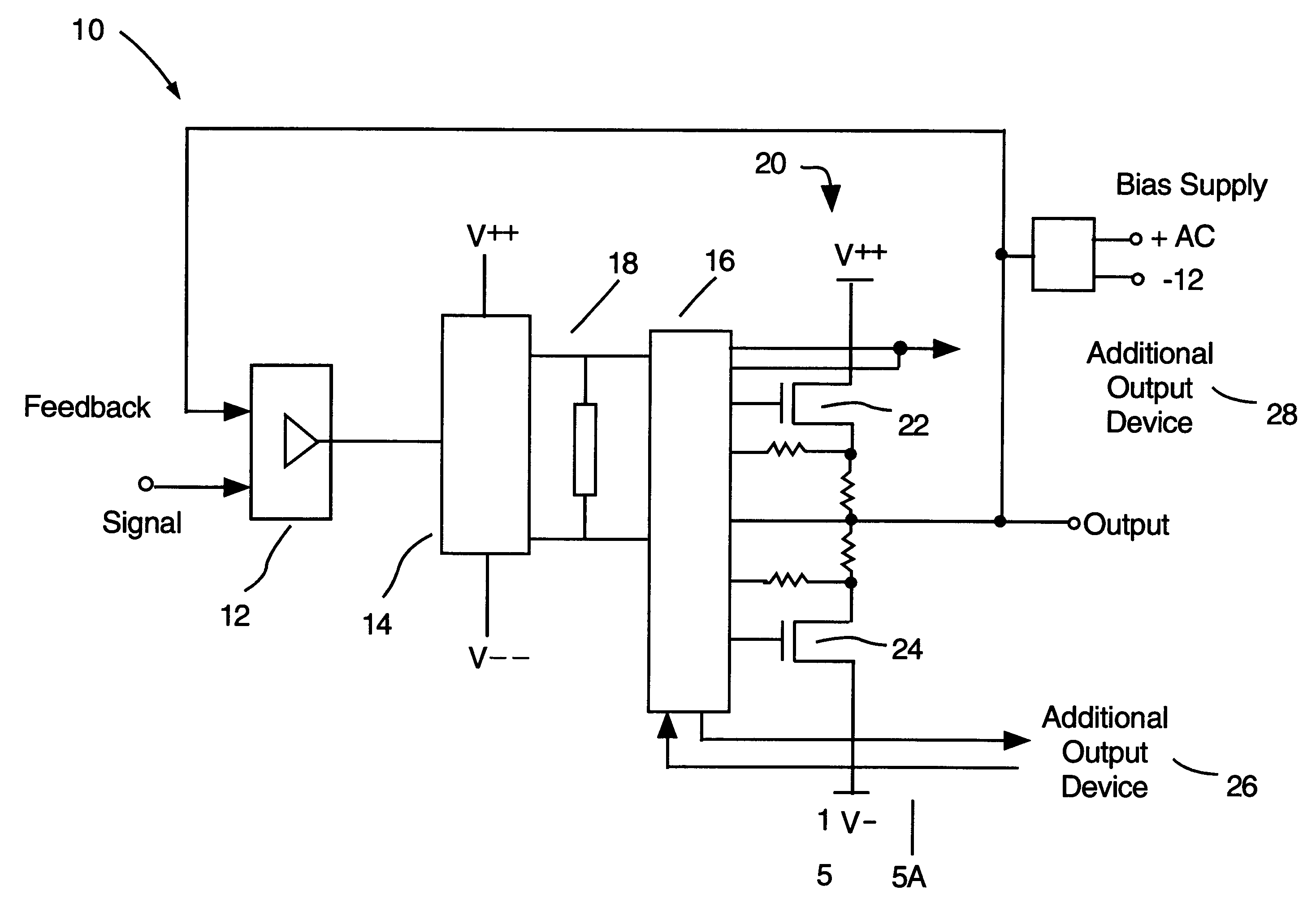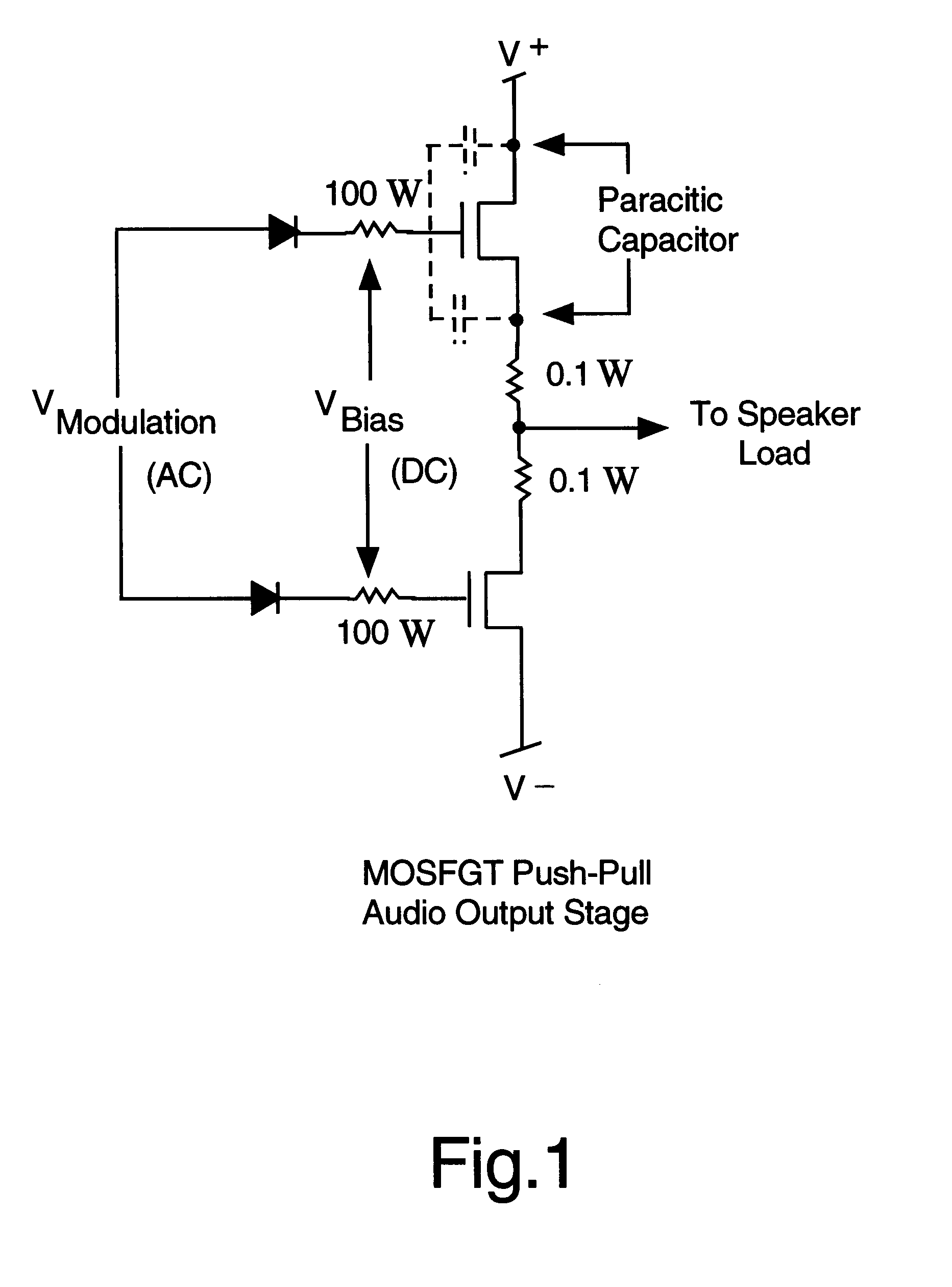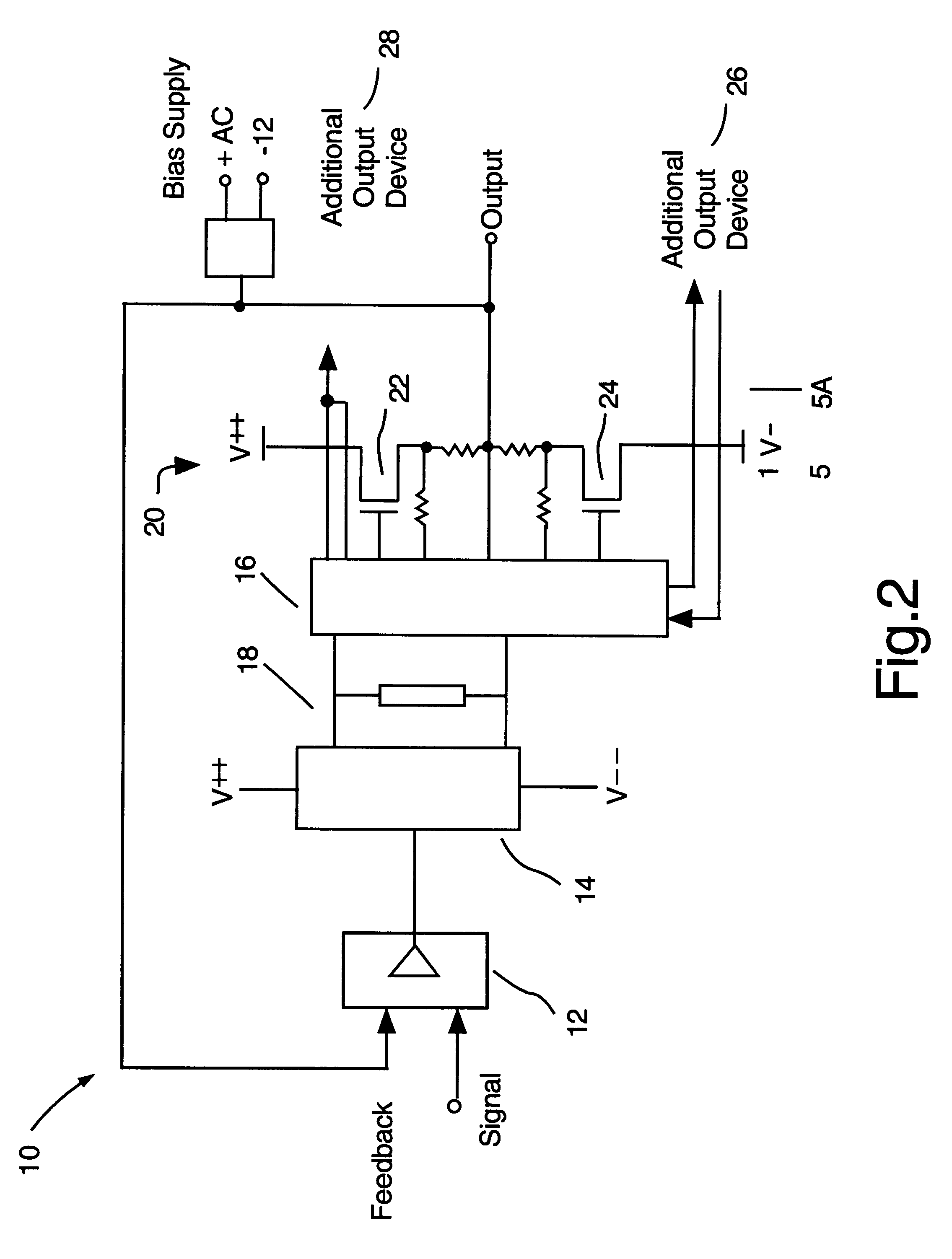Wide bandwidth, current sharing, MOSFET audio power amplifier with multiple feedback loops
a technology of mosfet audio and feedback loops, applied in the field of wide bandwidth, current sharing, mosfet audio power amplifiers with multiple feedback loops, can solve the problems of small changes in gate voltage, virtually unaffected bandwidth, and difficult to establish a quiescent bias point using traditional techniques
- Summary
- Abstract
- Description
- Claims
- Application Information
AI Technical Summary
Problems solved by technology
Method used
Image
Examples
Embodiment Construction
Those of ordinary skill in the art will realize that the following description of the present invention is illustrative only and not in any way limiting. Other embodiments of the invention will readily suggest themselves to such skilled persons.
In the disclosure presented herein, MOSFET devices disclosed herein include at least single transistor devices, such as MTP 12 N 20, MTP 12 P 20, available from sources such as Motorola Semiconductor of Phoenix Ariz., and single or multiple transistor functional equivalents thereof, whether now known or unknown.
FIG. 1 is a schematic diagram which shows a typical prior-art output stage of a MOSFET audio power amplifier. The amplifier of FIG. 1 suffers from the aforementioned drawbacks relating to transistor matching problems.
Referring now to FIG. 2, a diagram of an amplifier 10 is presented which can employ MOSFET transistors in the voltage gain and current gain stages. The amplifier 10 of FIG. 2 employs unique modulating techniques disclosed ...
PUM
 Login to View More
Login to View More Abstract
Description
Claims
Application Information
 Login to View More
Login to View More - R&D
- Intellectual Property
- Life Sciences
- Materials
- Tech Scout
- Unparalleled Data Quality
- Higher Quality Content
- 60% Fewer Hallucinations
Browse by: Latest US Patents, China's latest patents, Technical Efficacy Thesaurus, Application Domain, Technology Topic, Popular Technical Reports.
© 2025 PatSnap. All rights reserved.Legal|Privacy policy|Modern Slavery Act Transparency Statement|Sitemap|About US| Contact US: help@patsnap.com



